15 Things That Change When You Live on a Catamaran
As an Amazon Associate, we earn from qualifying purchases. We also earn from other affiliate websites. See our full disclaimer.
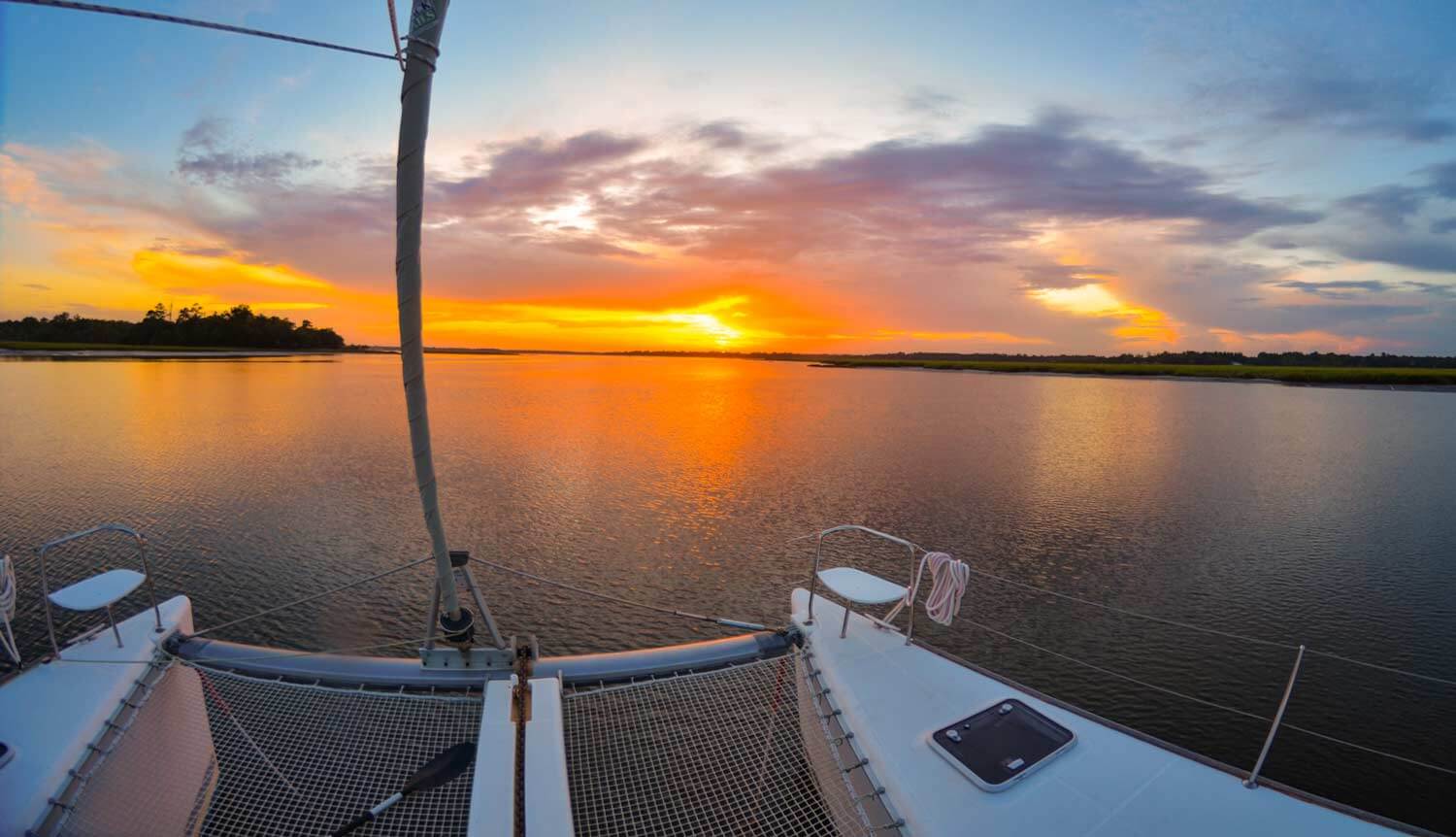
So, the dream of living on a catamaran is starting to look like a reality. You hit the internet to read as much as you can about life aboard.
I get it. For one, I was going to be ready for this big adventure and all the challenges that come with it. There was no way I was going to be caught unprepared. (Yeah… right.)
Preparing for the Live Aboard Lifestyle
When we moved on our sailboat, I quickly learned you have to experience this lifestyle to understand the challenges.
It’s been almost two years of living full-time on our catamaran. So, I decided to look at the day-to-day things that are different from our habits in land-based life.
Many things we didn’t think twice about have a massive impact on our lives on the boat. Things like water conservation, provisioning, cooking, cleaning, and adjusting to a small space all take time and energy.
Here are some of the big changes to everyday habits that we discovered living on a sailing catamaran.
1. Laundry on a Boat
A few years back, I was one of those people who threw most things in the hamper after one wear. It was just easy.
Unless you have the convenience of a washing machine onboard, it’s not so simple to run a load of laundry.
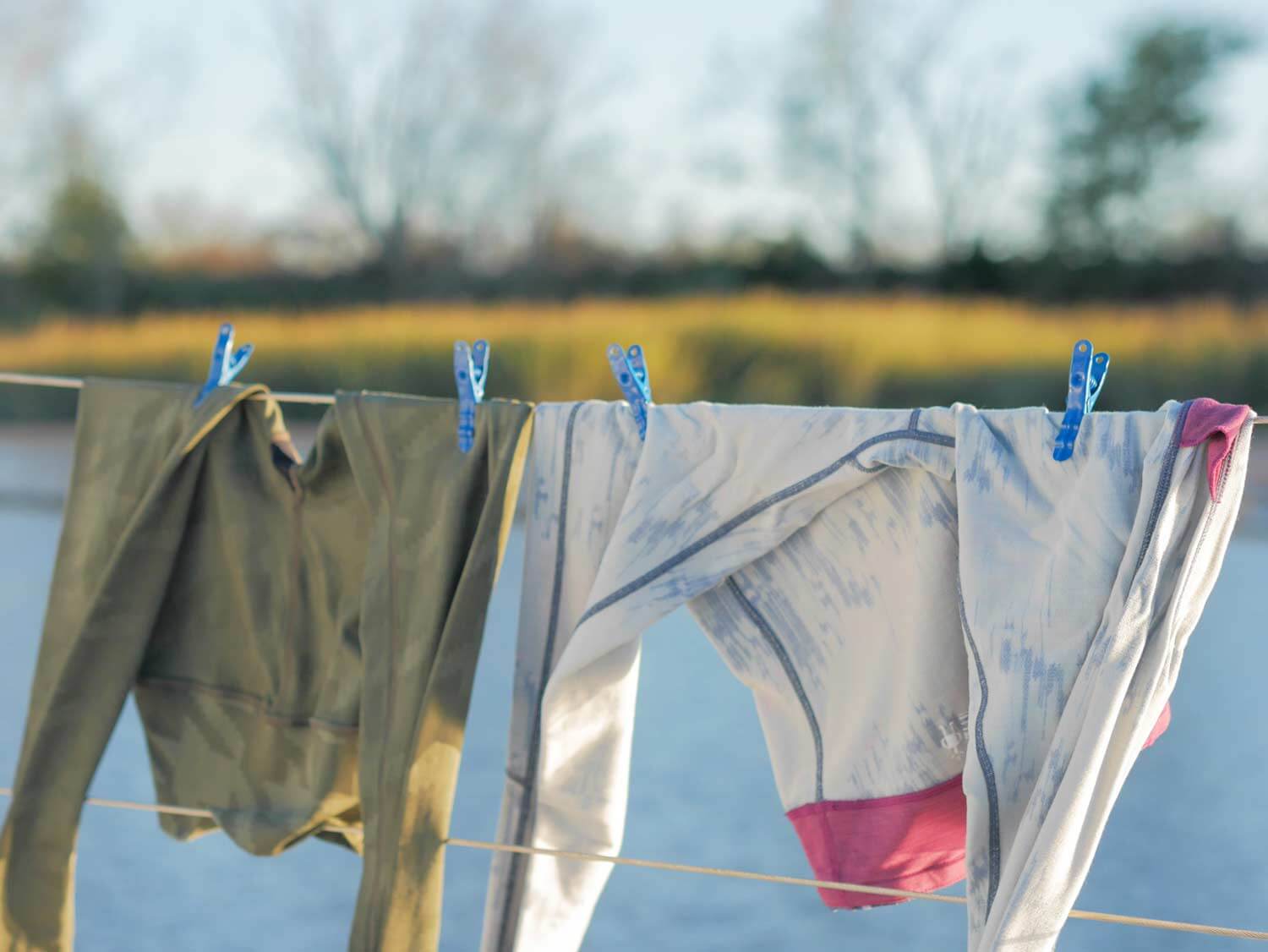
It costs money, and it can take a lot of time to haul your clothes around. Alternatively, handwashing is time-consuming, labor-intensive, and hard on your water usage.
To minimize laundry, you have to think about what you wear and how you wear it.
Summer Washing
In the summer, you can get sweaty just sitting on the boat.
I learned to wear quick-dry items like leggings, swimsuits, and UPF tops I could easily handwash with a small amount of water. If you can stretch the life of your outer clothing, you can clean undergarments and swimsuits in a small collapsible tub.
Winter Washing
Re-wearing clothes in the cooler months is much more comfortable than in the summer months. If it’s not dirty, I don’t wash it. If clothes smell or I’ve been doing boat work, I move them to the dirty pile. Just paying attention to these details reduces laundry. And the less you wash your clothes, the longer they’ll last.
2. Cooking Aboard
There are a few aspects of living on a boat that heavily influence your cooking.
Space. Access to ingredients. Water conservation. Ventilation.

Space
If you only have a small area to prep, you learn quickly to do it in stages. Prepping vegetables, putting ingredients away as you work, and washing dishes as you go is also essential.
Access to Ingredients
Before boat life, recipes were iron-clad when I was cooking. But without the convenience of running to the store, they’ve become more of a guideline. You learn how to adjust recipes based on what you have on hand. You get comfortable substituting vegetables, different spices, and acidity for flavor.
Water Conservation
When off the dock, fresh water is at a premium. How much water you carry (or make) will dictate how you cook.
We do a few things to conserve water in the kitchen. Wash dishes in saltwater first. Use an Aquabot for pressurized cleaning. Cook pasta with a small amount of water. I’ve also embraced one-pot meals to save water on cleanup.
Ventilation
Our catamaran is “galley up,” so it’s easy to open the cockpit window above the stove to release heat and steam. But that’s not always enough.
We use the thermal cooker in the summer to avoid heating up the boat. You can make beans, rice, broth – even casseroles or banana bread without expelling heat in the boat.
READ NEXT: For more tips and ideas for cooking on a boat, check out our lists of easy and versatile meals on a boat and sailboat galley essentials.
3. Water Usage
When off the dock, water is a high commodity on a boat.
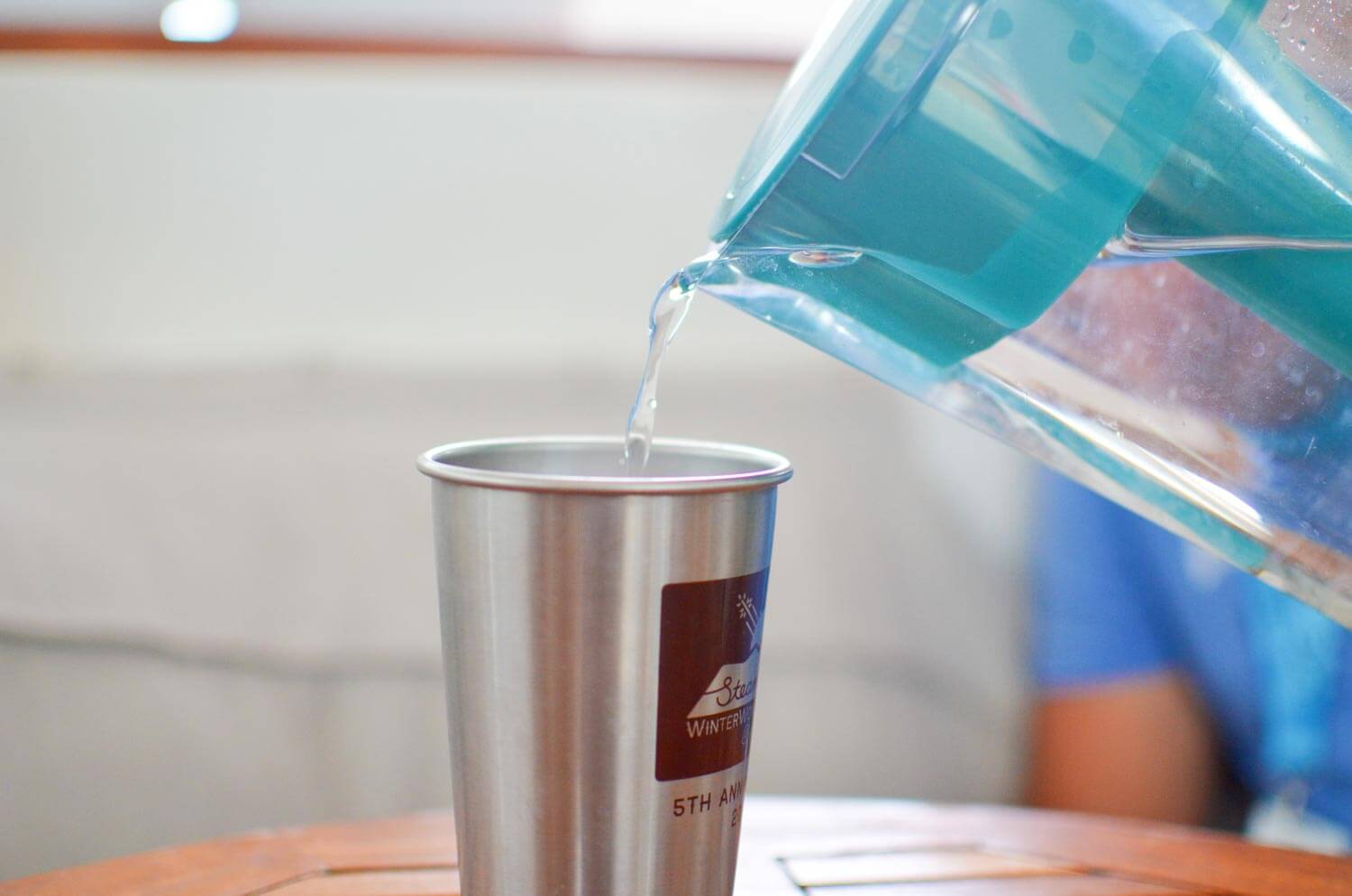
Even with two 80-gallon tanks, water can go fast if you aren’t paying attention.
You can minimize water through small changes to your habits, including:
- cooking pasta with a few cups of water
- swapping soap for hand sanitizer
- rinsing dishes on the sugar scoop
- we even recycle the cat’s stale water in the herb garden
Me, I love hot showers. Just steaming for like 30 minutes, that’s my kind of heaven. So learning to shower with less than a couple of gallons of water was a big hurdle.
Conserving water can be a challenge, but you’ll be surprised what you can save when you use it thoughtfully.
We had days in the winter when we used less than 5 gallons. It just takes a little practice, as with most things on a boat.
READ NEXT: For more tips on conserving water, check out our guide to saving water on a boat.
4. Sustainable Practices
When you live in a small space, you realize how many disposable items you are harboring.
When we first moved on the boat, the paper towel storage alone took up half a cabin.
Not only are you losing storage, but those disposable items are just that, future trash for you to deal with.
Ditching paper towels, plastic bags, and other single-use items saves space and money. As a bonus, you get to feel optimistic about creating less trash.
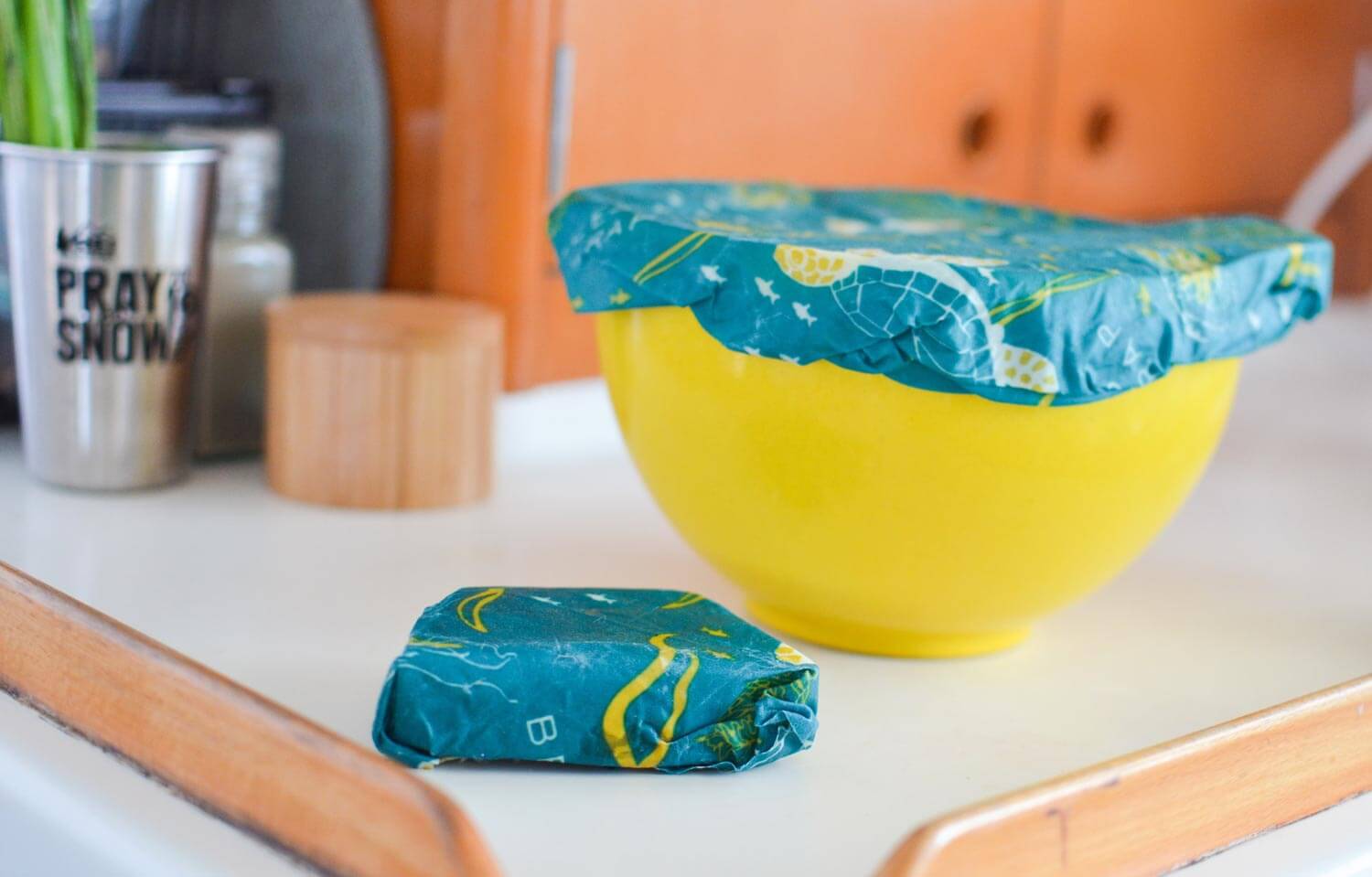
Here are a few sustainable options we switched to:
- Reusable “Unpaper” towels
- Cotton napkins
- E-Cloths, microfiber towels
- Beeswax wraps
- Foldable reusable bags
- Glass straws
- A quality set of plastic containers in various sizes
READ NEXT: Zero Waste Swaps for Small Spaces for more eco-friendly options.
5. Fridge Space
The residential fridge. Something I took for granted as a landlubber. A fridge door full of condiments, anyone?
Managing food in a tiny fridge requires strategy and a little education.
Learning what you NEED to keep in the fridge is helpful. Sure, it’s nice to have cold ketchup, but necessary? No.
Sriracha, soy sauce, hot sauce, mustard – out you go.
We also switched to almond milk and tofu brands that only need refrigeration after opening. This way, we can still stock up without loss of fridge space.
The Right Storage
Once the condiment bottles are out, having the right storage makes all the difference.
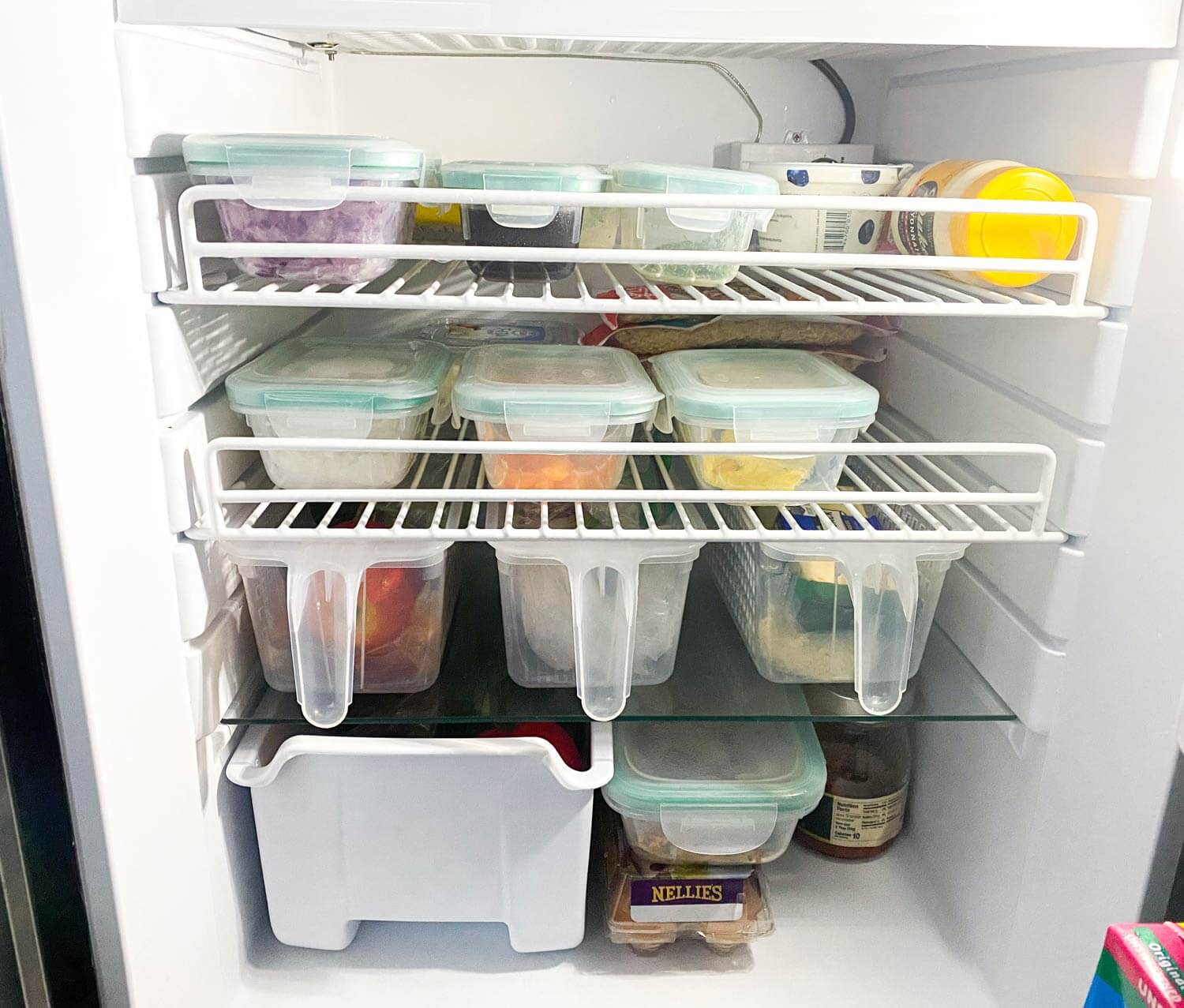
Containers need to be the right size to fit inside shelves on the door and inside the fridge. You want various sizes, so you don’t need to use a huge container if you have a smidgen of something.
Prepping Vegetables
You can save more space by chopping fresh veggies when you get back from the store. Broccoli, cauliflower, cabbage, and hardy greens can all be prepped ahead. I store any scraps in the freezer for homemade vegetable broth.
6. Provisioning
Keeping track of your grocery store when you live on a boat is crucial. You probably won’t be able to run back to the store because you forgot the butter.
Stocking Up
One of the nice benefits of living on a catamaran is the space.
We tend to stock up on these when we can.
- Beans (dried and canned)
- Grains, pasta, oats
- Canned and dehydrated vegetables
- Baking goods and almond milk
- Oils, vinegars, spices, nuts, seeds
- Wine and beer

Most of the time, we are hand-carrying our groceries. So when we have the opportunity to have a car, we load up on heavy items.
When we plan to be at a marina, we have a list ready for Amazon and Walmart.com to have shipped.
READ NEXT: Get a detailed overview of stocking your boat in our Practical Guide to Sailboat Provisioning.
Supplementing Fresh Food
We keep a variety of veggies on hand: dehydrated, canned, a little frozen, and fresh. When cooking, I use a little bit of everything to stretch fresh foods.
We have a nice space in the cockpit where we keep potted fresh herbs. They can really step up a dish!

As a bonus, they add to the coziness of the cockpit living space.
7. Downsizing Your Closet
Before I started to plan for boat life, I had a giant wardrobe. I love clothes. And I had been collecting them most of my life.
Believe me, when I tell you cutting my wardrobe down to less than 100 items was a long, emotional process.
A Minimalist Wardrobe
The less you have, the less you need to care for.
Aim for a wardrobe of pieces you love that work for living on the water. It’ll be easy to get dressed, and you’ll be happy in your clothes. And if you are managing your laundry (see #1), you won’t need many clothes.
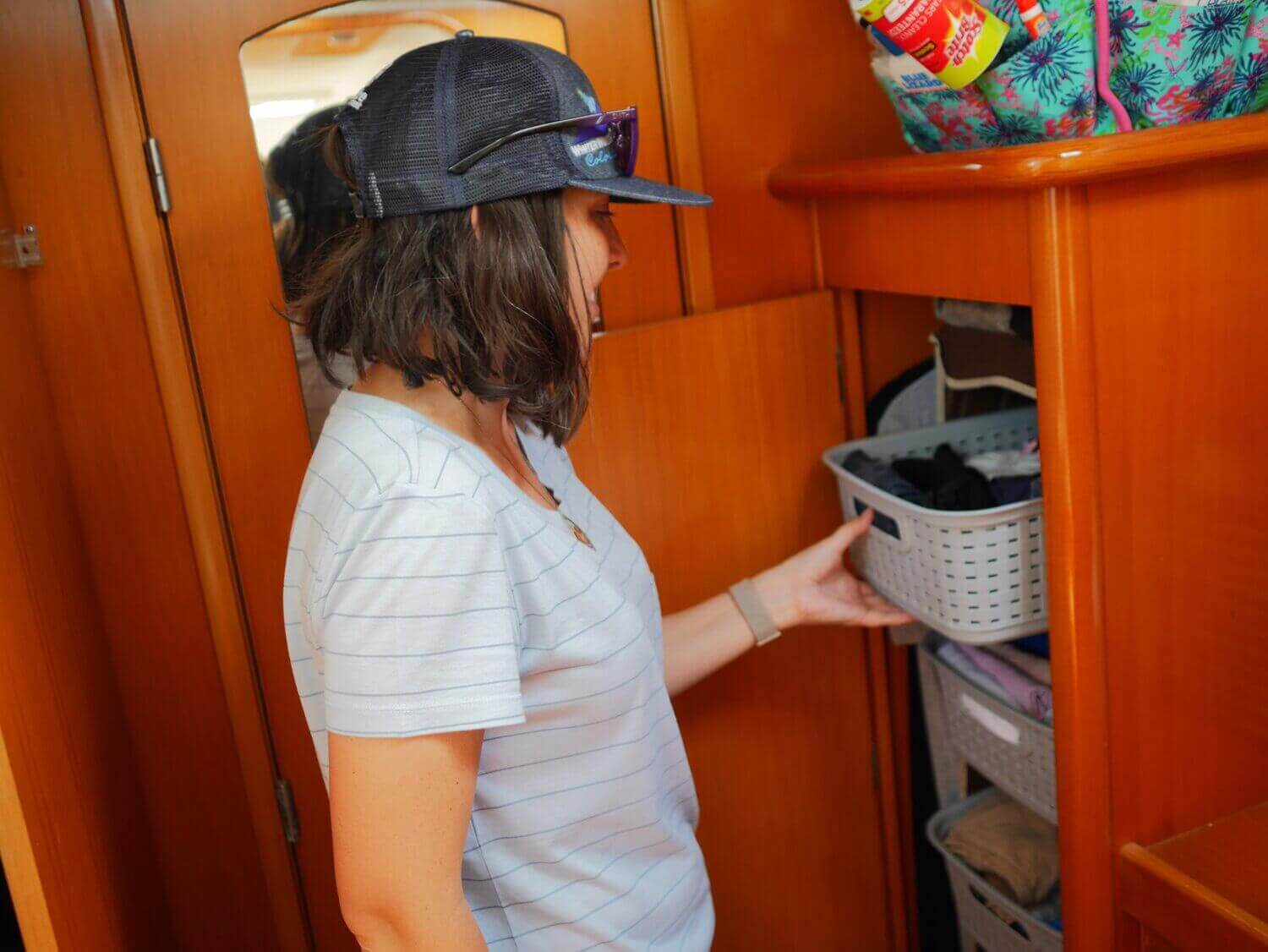
The owners’ version of our catamaran has great storage. I can easily see all the clothing in my wardrobe. I only need to store a few off-season items under our berth.
READ NEXT: For what type of clothing to have on your sailboat, see What to Wear Sailing. Or see How to Downsize Your Wardrobe for more on getting rid of clothing.
8. Temperature Control
Spoiler: you don’t have much control of temperature at anchor. And what power you have isn’t as easy as turning the dial on the thermostat.
Hot Days
On a catamaran, you can pretty much open up the doors and hatches on the bridgedeck and get a cross-breeze on a hot day.
I was surprised that Georgia in August (as miserable as it was during the day) was never unbearable at night. We used Breeze Boosters over our cabin, and it worked wonders moving the air around at anchor.
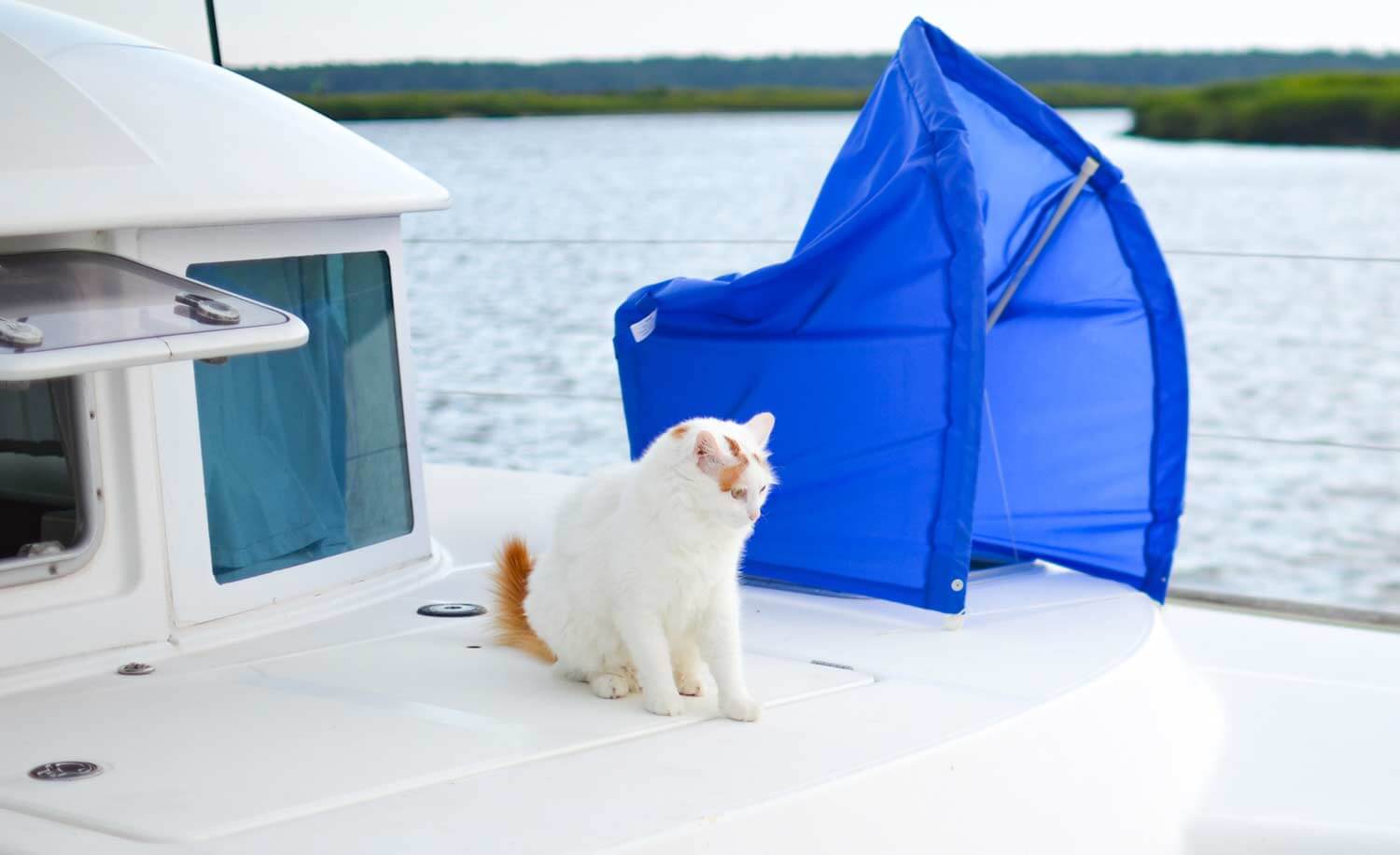
Cold Nights
When it’s cold on a catamaran, you know it. There’s no insulation, and the boat cools down quickly. Below 40 at night is chilly.
Fortunately, if the sun is shining, it can heat the bridgedeck nicely in the morning.
Down blankets, the right clothing, and foul-weather gear will keep you from becoming an icicle.
9. Storing Things
On a boat, you can’t just throw your things in a locker and forget them. Nope.
You’ll need to plan when storing clothing, personal items, and food.
Mold, leaks, and bugs are all things to be concerned with.
Essential oils, bay leaves, vinegar, and plastic bags will be vital to protecting your items.
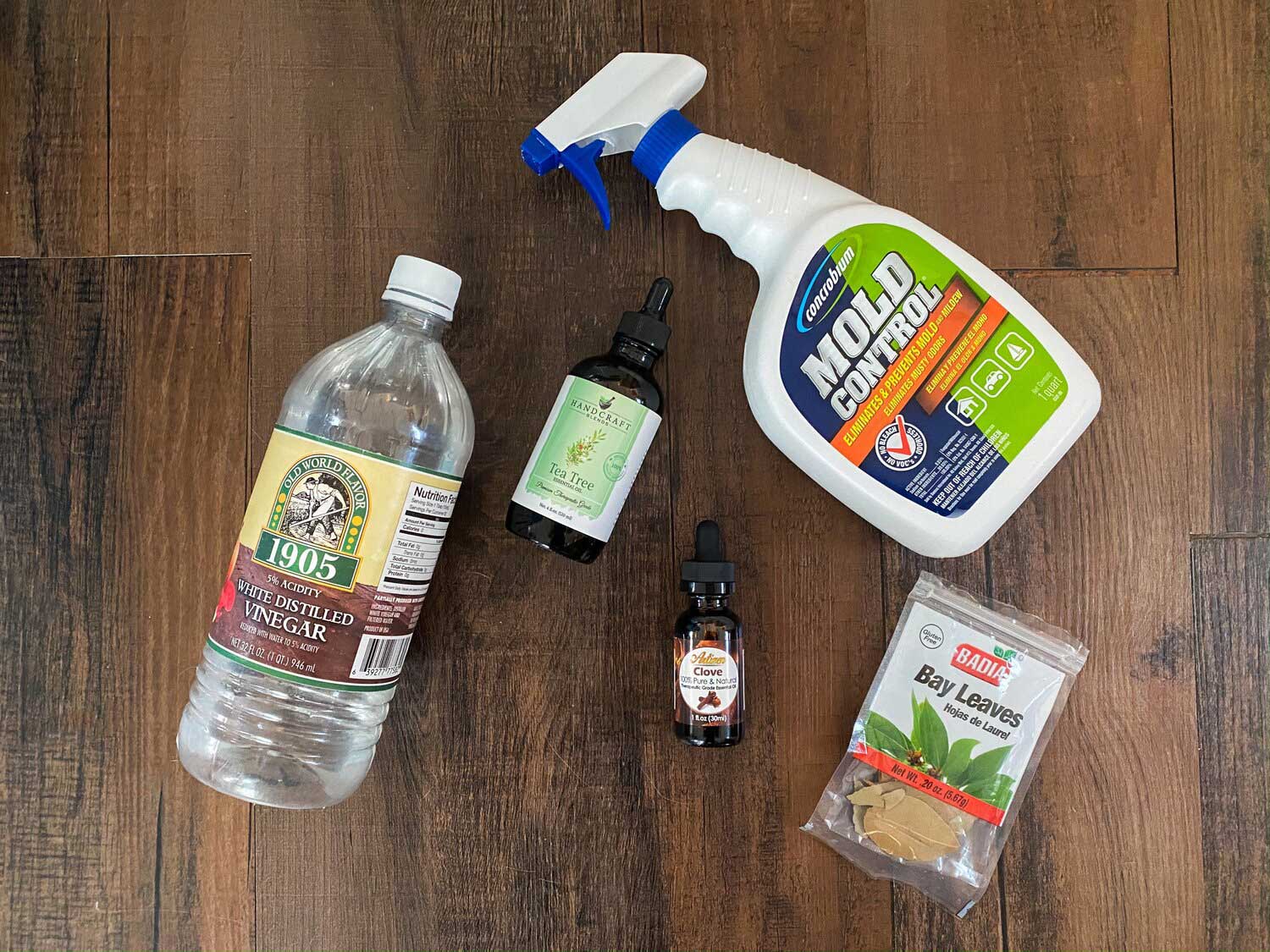
You’ll also need to think about where you store things and how accessible they are. It becomes a bit of a puzzle to make sure you keep items you often use in an easy-to-access location.
READ NEXT: For storage tips, check out Helpful Boat Storage Ideas for Liveaboards.
10. Slowing Down
A big part of living happily on a boat is moving at your own pace.

It is being in the mindset of appreciating what you are doing now and not continually looking to the next move.
When we first moved aboard, there was self-imposed pressure we should be moving faster – doing more.
When we finally slowed down and started to embrace the here and now, we enjoyed the boat so much more.
11. Your “House” Breaks (A Lot)
When things go wrong on a boat, they tend to go really wrong.
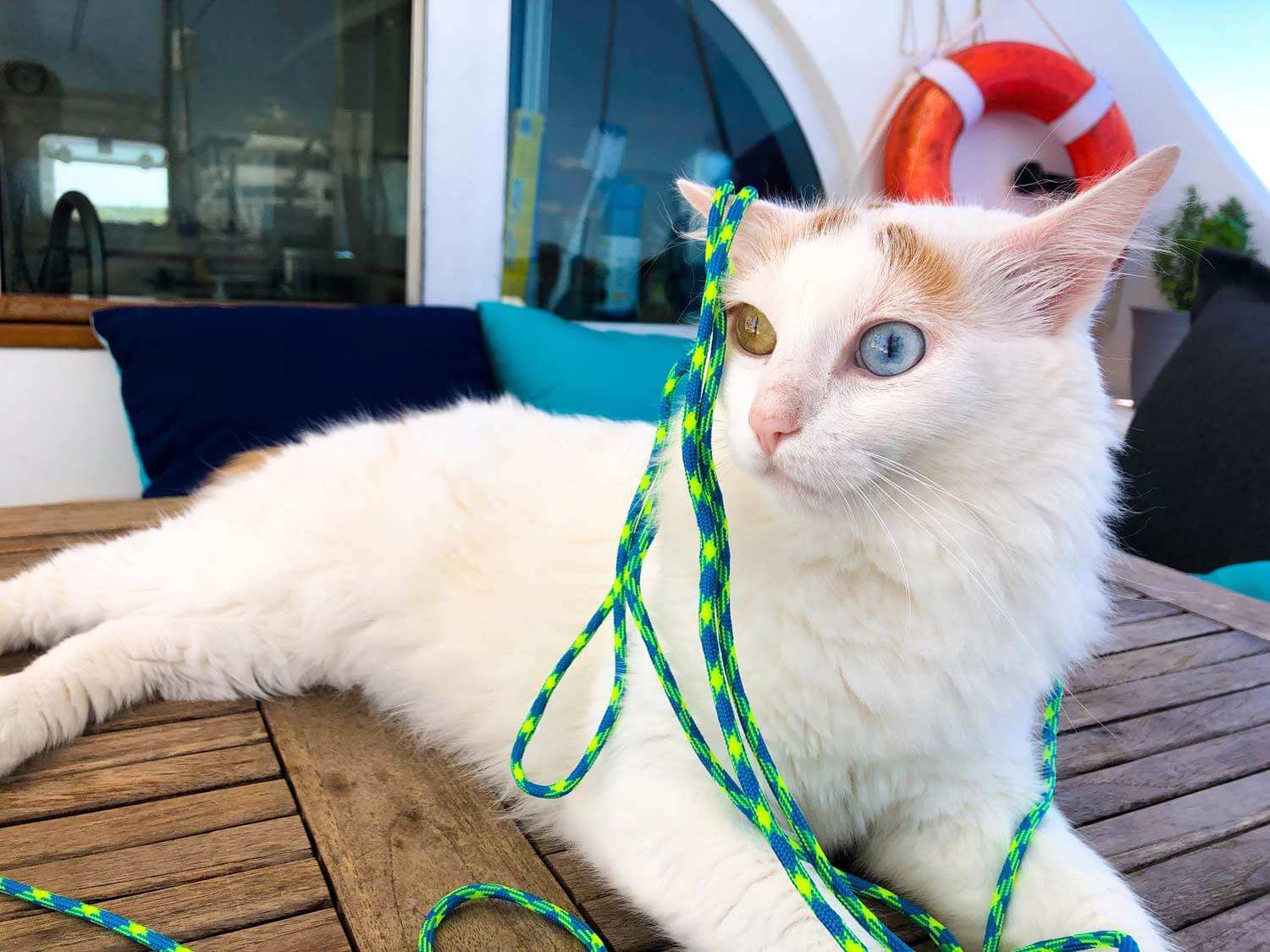
A pro and con of catamarans is there are a lot of duplicates. It’s great to have a backup, but it also means double the maintenance. Two hulls, two engines, two heads… you get the picture.
On the plus side, when our starboard engine broke, we were trying to maneuver through a bridge. We had to turn 260 degrees to turn toward the bridge, but one engine is better than none!
The hardest thing in these moments is keeping your head when everything is against you.
We try to slow down and take a breath if the situation allows. Once any immediate concern is taken care of, we take a breath before diving into solving the greater issue.
12. You Learn to Live Intentionally
Our decision to move on a sailboat was for the rewards of the lifestyle.
One of the most significant rewards is being intentional with space, time, and money.
Living on a boat offers freedom from your stuff. It allows you to live more simply.
On the boat, we get to spend more time with each other. We only have what we need because space is limited.
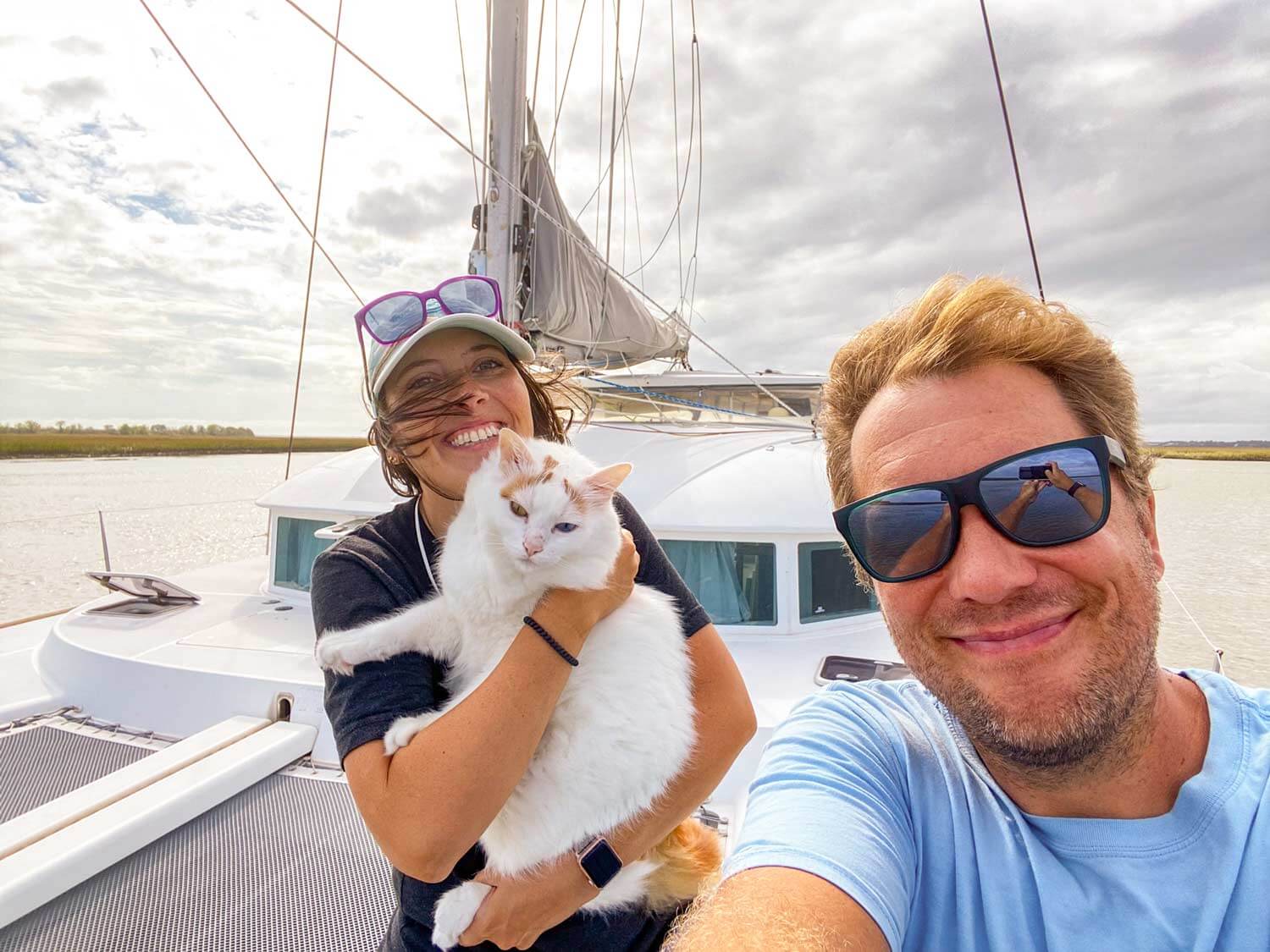
Don’t get me wrong. A boat requires time and money. But we are intentional about how we spend those when maintaining our floating home.
READ NEXT: Our article on the cost of living on a sailboat breaks down expenses by category.
13. Appreciation for Nature
Living in the Colorado Rockies for over a decade, it was easy to love the outdoors. But living on the water creates a deeper connection.

You wake up to the water lapping on the boat. The sun dances off the waves, throwing reflections across the cabin.
Walking outside at anchor and seeing the birds hunting for breakfast is a morning routine. And a sea turtle drifting by for a visit is not uncommon. Even relying on the sun for power and the wind to travel is part of the lifestyle.
All these experiences bring you closer to nature and beg you to slow down, breathe, and take it in.
14. Personal Space
It doesn’t matter how much you love your significant other. If you live on a boat together, you will be looking for some “me time.”
When you sleep, eat, shop, travel, and take care of a boat as a team, that’s a lot of togetherness.
How We Find Space
It’s nice to create spaces for personal time in a small space like a boat.
A big plus of a catamaran is you can create a few separate spaces.
We have four main spaces where we spend time: the cockpit, the trampoline, the salon, and the owners’ berth. Ensuring these areas are comfortable and cozy helps us find our own spaces in a tiny floating home.
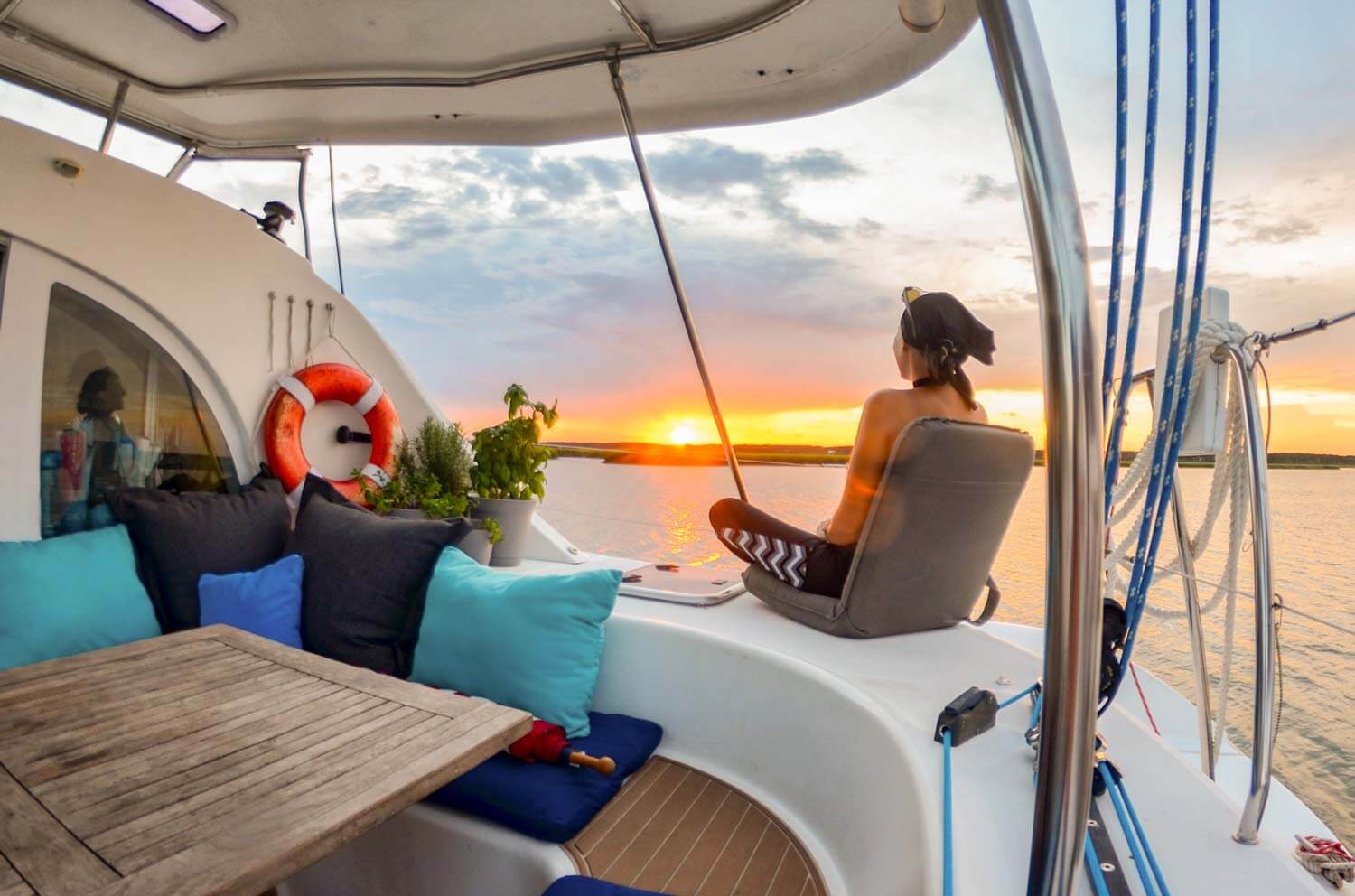
Sometimes, it’s not about physical space but mental space.
I like to have personal time while I’m cooking. It’s something I enjoy, and I can put on my headphones with a show or playlist and tune in while I cook.
Even a quick solo kayak adventure is rejuvenating if we are in a nice anchorage.
15. Minimalism
Embracing minimalism was a change we made going into boat life. But it’s not the typical view of minimalism that has become trendy these days.
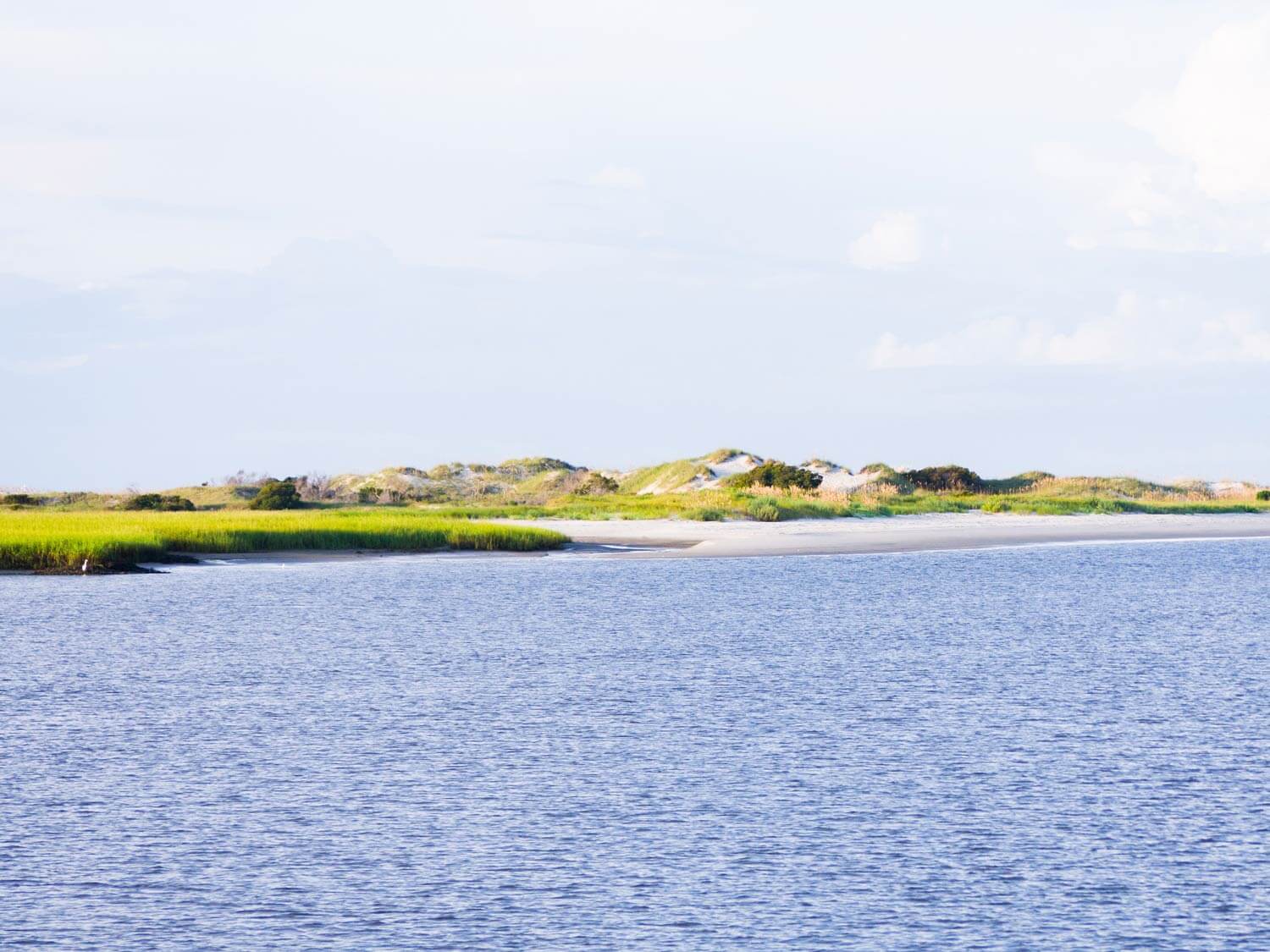
Minimalist Lifestyle on a Boat
The typical “rules” of minimalism aren’t as clear-cut on a boat.
We have a lot of extras when it comes to spare parts and tools. Some parts can be hard to come by, and with two engines, you need double the spares. Not to mention, things never break when there’s a West Marine around the corner.
We also have a lot of non-perishable food and duplicate personal care items. It’s easier to stock up when we have the opportunity. This process keeps our routine shopping to mostly fresh items.
How We Live Minimally
On the flip slide, we don’t have a lot of extra stuff – extra clothes, additional personal items, disposable items.
We don’t have more typical things you would find in a house, such as a dishwasher, microwave, or washer/dryer. We are minimalists with water and power when we’re off the dock.
We aren’t the typical minimalists, but we use space intentionally. And we continue to evaluate our needs based on this lifestyle.
READ NEXT: Check out our full guide on ways to downsize and live minimally.
Can You Live on a Catamaran?
After a year as liveaboards, many of your daily habits will change. We are still adjusting and finding the best ways to adapt to life on a sailing catamaran.

You lose many conveniences of the modern world, but it’s entirely possible to live without them. It comes down to deciding which comforts are important to you.
How you use space, time and money will shift. You’ll learn to be sustainable, thoughtful, and more self-sufficient.
Living on a boat is a unique experience. No matter how long you do it, it has the power to change the way you live in the future for the better.
Want to learn more about cruising on a boat?
For more on the reality of boat life, the cost of living aboard, and tips for life on the water, view our complete guide.
Like this post? Save it on Pinterest for later.
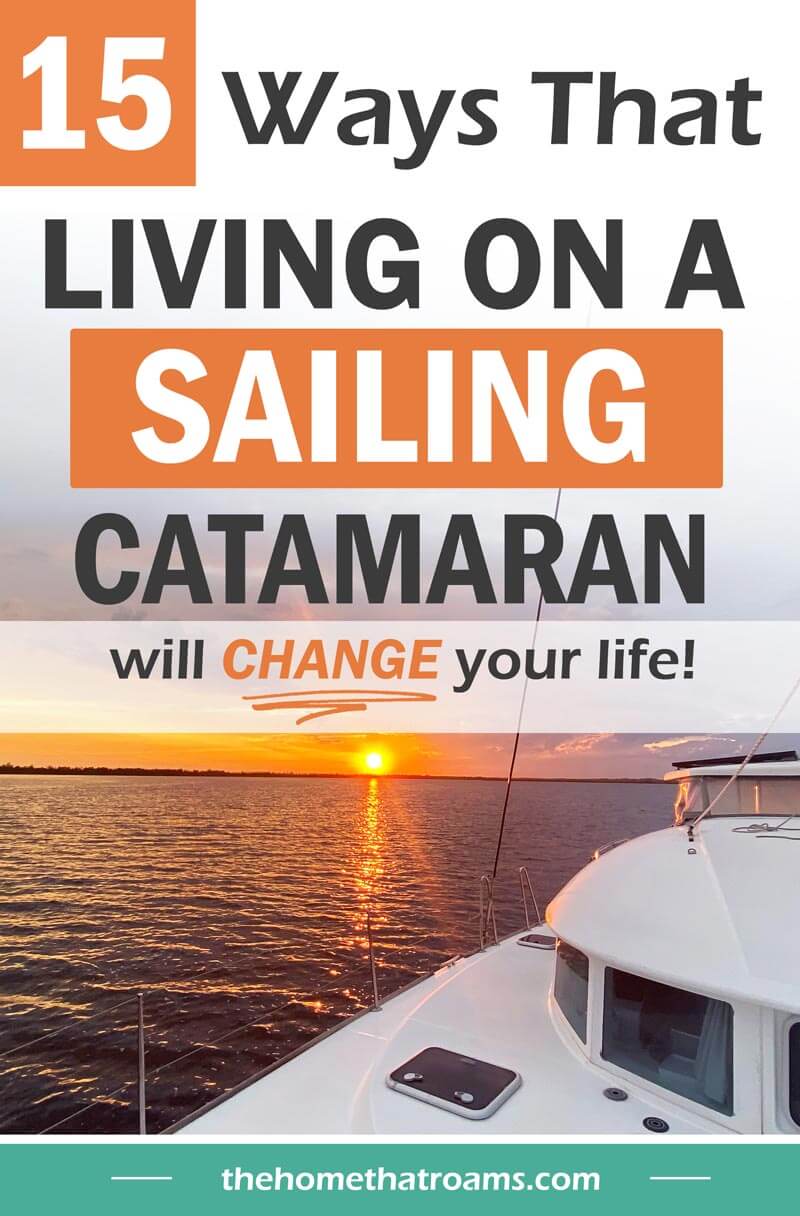
Or view our web story.




That’s really great post. I appreciate, Thanks for sharing.
Glad you liked the post!
So glad I found this site, looking forward to exploring the rest of it! But here’s my first question, as someone who’s still in the "dreaming" stage: This article tells me that the most basic aspects of day-to-day living are a constant source of concern and effort. Yet there are yachts nicer than most five-star hotels. So what’s the price point (or size point, or whatever point) where your daily concerns don’t revolve around things like do we have enough water to cook dinner and how bad do my clothes really smell? Does frequent marina access solve these issues? Is there a way to live on a boat where it’s easy, or does that only happen in Jimmy Buffett’s songs?
Hi Frank and Lola, thanks for stopping by and asking some great questions! Generally, the number of conveniences onboard a boat directly correlates with the time and dollars needed to have those conveniences. So when you think of the hotel like yachts, also think about the captain and crew and resources it takes to keep them running. It’s the same with smaller yachts. Even when you have the systems, you still have to manage your power or resources to run the watermaker or watch the weather and route plan to get to the marina. This is one reason a lot of boaters opt for fewer systems.
I had to laugh in agreement at your Jimmy Buffett reference – I think Jimmy must be doing a lot of day boating, haha. I personally feel that if you had around a 45-foot cat and a big budget to outfit it, you could have a lot of modern conveniences (watermaker, large solar setup, washing machine, etc.) However, living on a boat is never going to be easy IMHO. You have to put in the effort to live on the water!
I hope this was helpful and didn’t discourage you. My goal is to provide a realistic view of the lifestyle!
Agree. Especially #11. We live on a monohull so only have one head to contend with. Also whatever the purchase price, expect to spend 10% a year maintaining said boat. Things break at the most inconvenient times and improvisation is absolutely key.
Hi Breanna, #11 is definitely a big one! And of course, the head is always interesting. The first time we had a real maintenance issue with the head I posted on Instagram and announced my husband and I’s relationship had officially made it through our first serious head malfunction, haha. As you mentioned, Improvisation is also so crucial! We tend to get pretty creative with solutions 🙂
What entertainment do you use on a long haul, such as books, cards, chess. How do you plan the nights such as sleeping or on watch. Do you use automatic steering.
Hi Stephen, we like Audible for downloading books, I also like to download podcasts. We also use an external drive for movies. We do have and use an autopilot onboard. We don’t have experience with long passages, but The Boat Galley has what I think is a great article on the subject, you can find it here! https://theboatgalley.com/passagemaking-and-sleep/
Thanks for such an informative post. We’re in the process of buying a 42ft catamaran and plan on sailing up the east coast of Australia next year…scary and exciting!
I see that in some of you photos you have a gorgeous looking cat 😊 I’m planning on taking our 6 year old cat with us on the trip. Do you have any tips and advice on how to make life more comfortable and safe for a cat onboard and how to get them acclimatised to boat life?
Any advice would be much appreciated.
Thanks, Dee
Hey Dee, this is so exciting! I’m sure there’s lots of planning and preparation in your future but in a good way 🙂
I have a post about sailing with cats that you can find here – https://thehomethatroams.com/blog/cat-on-a-boat/
But in general, I would say to take it slow and keep a close eye on them in the transition period while they’re testing their limits. Our cat is good at finding any open compartments, so when you’re working on things or storing things, make sure they don’t slip in! You will probably want to use a life jacket in the beginning at anchor, as well as keep a good eye on them until they become more comfortable. The top of the bridgedeck seems to be a favorite spot for cats since they can see so much from up there!
Best of luck on your new adventure! – Morgan
Wow. Thanks for sharing your experience. Unfortunately, not all people experience that, so we must enjoy every second. Nice post!